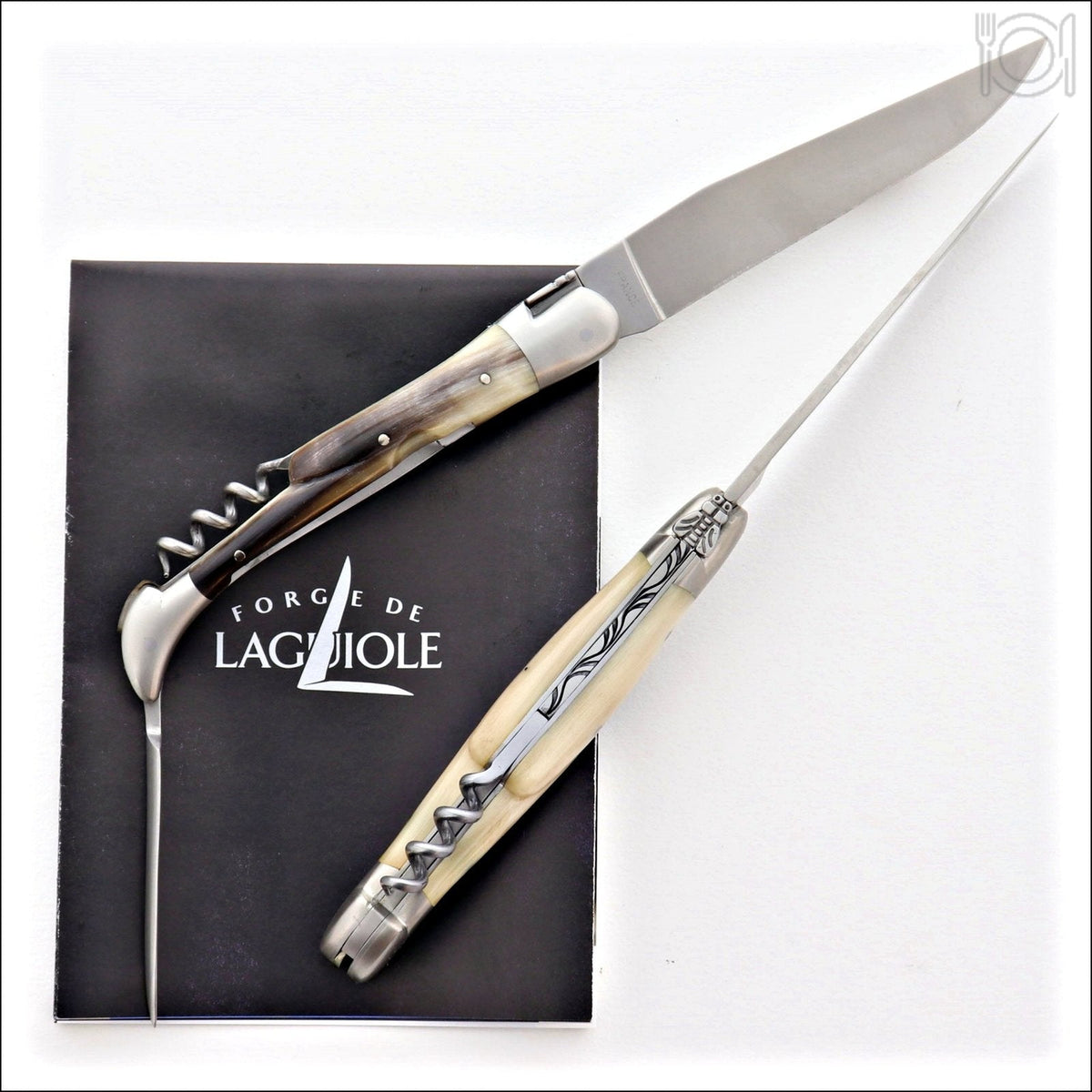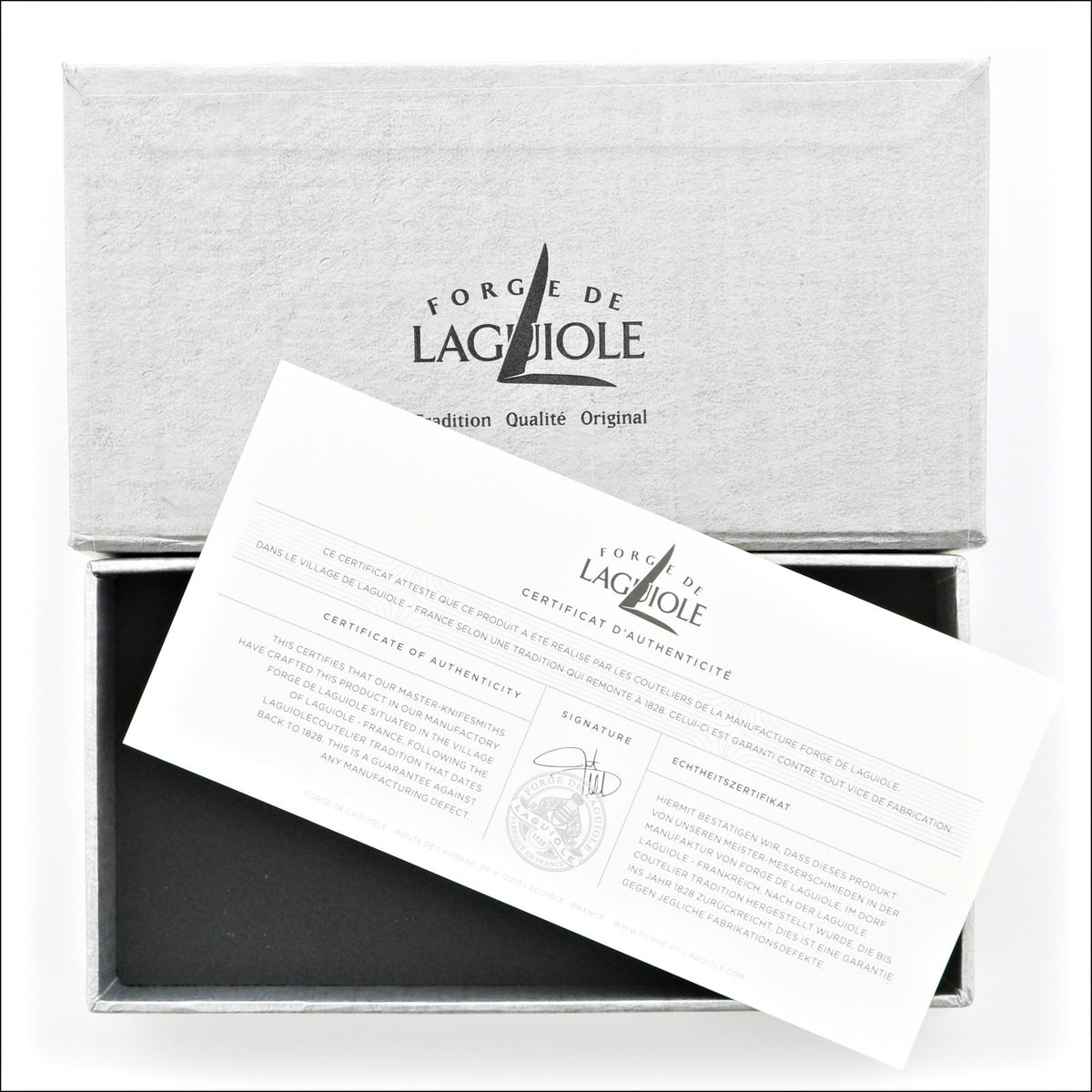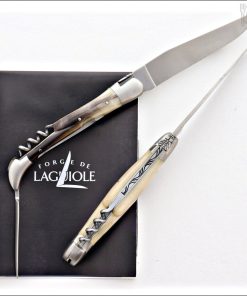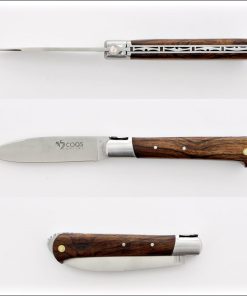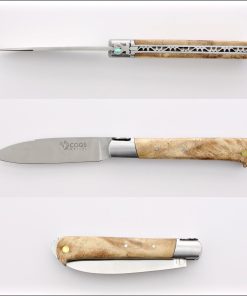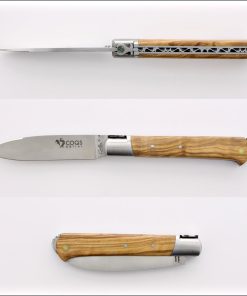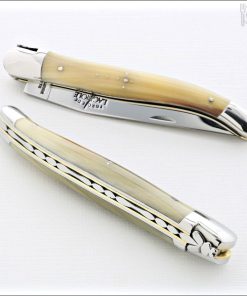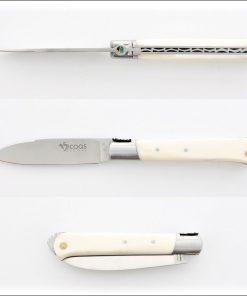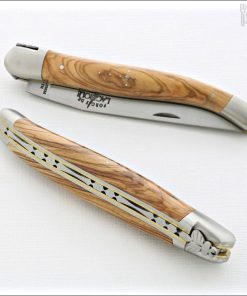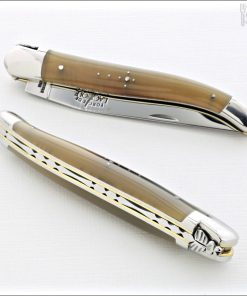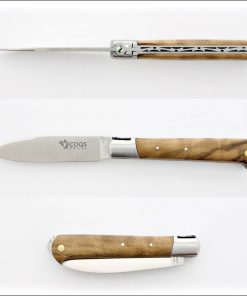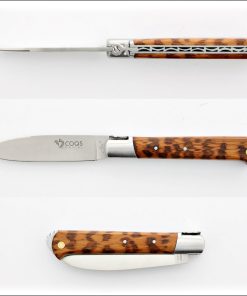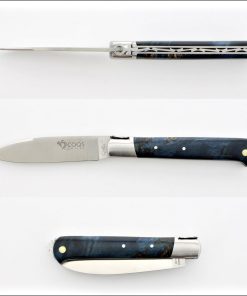Forge de Laguiole Tradition 12 cm Horn Tip with Awl – Satin Forge de Laguiole
$ 368,00 $ 110,40
This is a Laguiole Corkscrew knife with Awl, also called a Laguiole 3 piece
Crafting the three-piece Laguiole knife is a challenging feat and an increasingly elusive one at that. However, its true importance is often overlooked. The knife was originally designed as a Cattlemen’s tool, with the “Awl” serving as a vital component.
The corkscrew was added to the Laguiole knife in the 1880s. This addition resulted from the sale of corked wine bottles in urban society and, in response to the demand of Aveyronnais who emigrated to work in the cafes of Paris. Cafe owners and waiters were to remain loyal to their traditions.
This Laguiole knife is entirely handmade in the village of Laguiole and features a forged T12 steel blade. Handmade in the village of Laguiole, France, Forge de Laguiole knives are indeed the highest quality in the market today. Additionally, each of these masterpieces is handmade by the same craftsman to ensure pride in the completed piece.
What is a Forged Bee? You can recognize a forged bee by looking below it, where it meets the decorated spring. If you do not see any gaps, it’s a good sign that the bee and spring were forged from the same piece of metal. You can also recognize a soldered bee by noticing a straight gap/ridge where the bee meets the spring.
![]()
A 12 cm Laguiole folding knife can be used as a steak knife; its open length is 8. 3/4″ vs. ~9″ for a standard steak knife. Why use such a knife at the dinner table or at your favorite steak house? Check out our article (new tab) for the surprising answer.

The Awl
As some retailers may make you believe, primarily by ignorance, the Awl is not a punch or a tool to take out knots; it is a rudimentary “Trocar.” Most of us who did not spend years in medical school do not know what a Trocar is; it is a surgical instrument used to puncture body cavities.
Wondering why a cattleman would require such a specific tool? The answer lies in the fact that herds of cattle tend to wander off their allotted fields, even with the help of dogs. And when they do, they often end up in fields containing “Luzerne,” a type of legume that produces nitrogen through its roots. This plant can cause “bloat” in animals if they overeat it or consume it when the grass is damp and young, as it contains more toxins at this stage.
Bloat is caused by the buildup of gas in the rumen of the animal, which is one of the four compartments of its digestive system. If not relieved in time, the resulting stomach pressure will lead to the loss of the herd. To save the ailing animal, cattlemen resorted to puncturing the stomach using available tools, such as barbed wire, nails, or even sharp sticks. This changed when the Awl was integrated into their knives, providing them with a reliable tool to save their animals.
The Awl has a unique shape and size, designed to prevent cattlemen from inadvertently injuring the animal by inserting it too deep. The triangular angles of the Awl result in a “clean” puncture which is relatively self-healing. While certain models feature decorative notches, they do not affect the Awl’s functionality.
Specs
- Closed length: 4.72 inches (12 cm)
- Open length: 8 5/8 inches (20.30 cm)
- Spring & Bee: One piece forged (no soldered bee).
- Blade: 3.25 inches (8.26 cm) – 3 mm thick made of forged T12 alloy.
- Screw & Awl: Stainless steel
- Weight: Approx. 85 grams (3 oz)
- Bolster & liners: Cold forged solid brass

Professionally packed and fast shipping
Due to our longstanding partnership with UPS FedEx DHL, and other top international carriers, we are able to provide a range of shipping options. Our warehouse staff are trained to pack your goods exactly as per the specifications we offer. Your goods will undergo an extensive inspection and be safely packaged prior to being sent out. We ship to hundreds of thousands of customers every day across different countries. The fact that we're determined to become the largest online retailer in the world is clear. The warehouses and centers for distribution are in Europe, as well as the USA.
Please note that orders with more than one item will be subject to a processing period that is based to the specific item.
Prior to shipment, all purchased products will be thoroughly inspected. Today, the majority of orders will be shipped within 48 hours. Expected delivery times are between 3-7 days.
Returns
The stock is dynamic and we do not control it completely due to the fact that many parties are involved, including our factory and warehouse. The stock can change at any time. Be aware that it is possible that your order could become unavailable even after you have placed the order.
The policy is 30 days. We will not return or exchange your purchase after 30 days since you purchased it.
In order to be eligible for a refund your item must be unused and in the same state as when you received it in. The item must be in its original packaging.
Related products
POCKET KNIFE
5 Coqs Pocket Knife – Red Stabilized Poplar Burl & Mother of Pearl Inlay Fontenille Pataud
POCKET KNIFE
5 Coqs Pocket Knife – Blue Stabilized Poplar Burl & Mother of Pearl Inlay Fontenille Pataud
